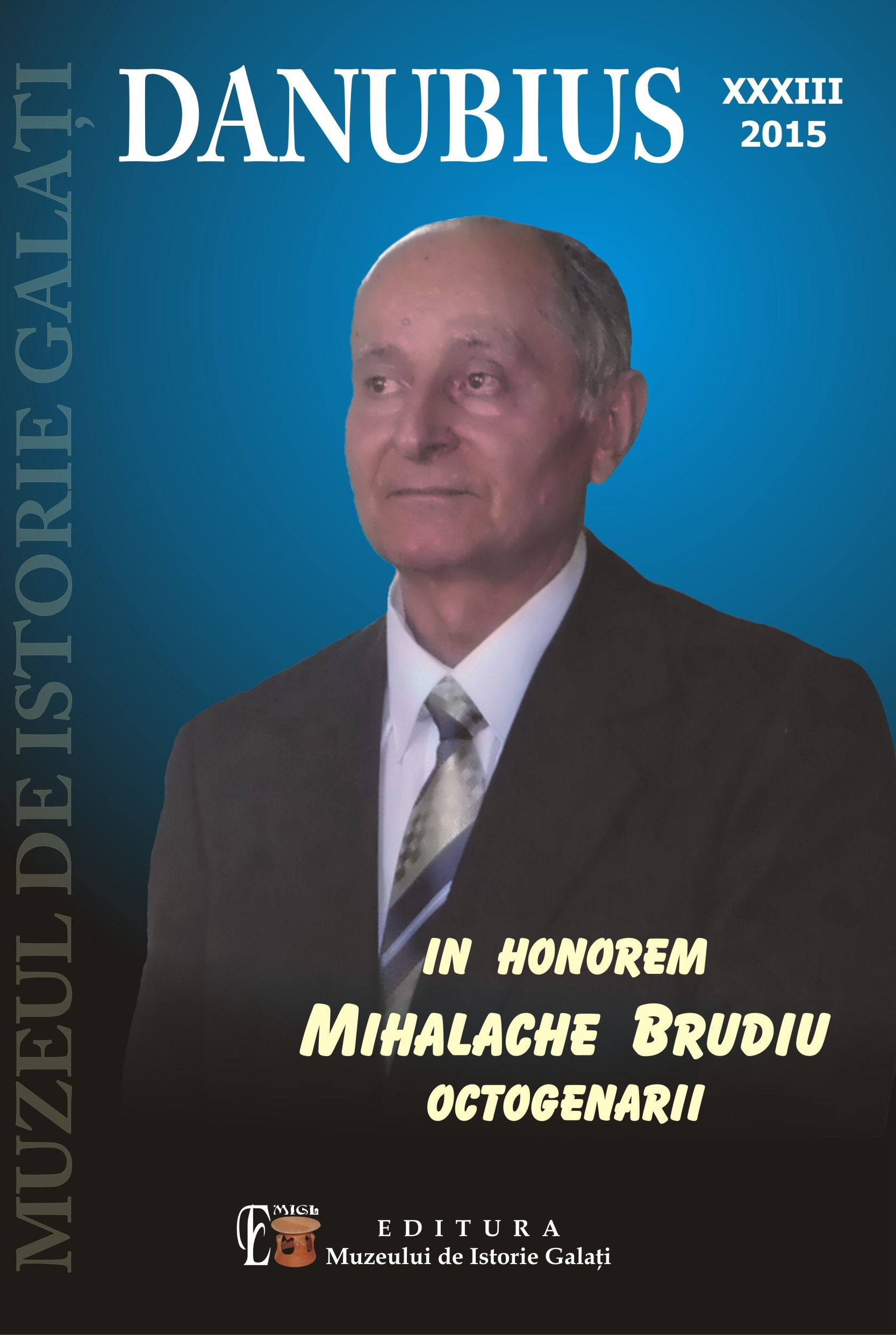Industria materiilor dure animale descoperită în aşezarea de la Negrileşti – „Curtea Şcolii”, jud. Galaţi (2014)
Artefacts Made of Osseous Raw Materials Discovered at Negrileşti – „Curtea Şcolii” Site, Galaţi County (2014)
Author(s): Corneliu Beldiman, Costel Ilie, Diana Maria SztancsSubject(s): History
Published by: Muzeul de Istorie „Paul Păltănea” Galaţi
Keywords: bone; Negrileşti; Noua culture; osseous raw materials artefacts; paleotechnology; red deer antler; Sântana de Mureş culture; Starčevo-Criş culture
Summary/Abstract: The article presents the data issued from the analysis regarding a collection comprising 8 artefacts made of osseous materials (bone and red deer antler). These belong to the Starčevo-Criş (3), Noua (2) and Sântana de Mureş (3) cultures. The artefacts were recovered during the 2014 excavation campaign in Negrileşti comm., Galaţi County – „Curtea Şcolii” („Schoolyard”) site (NGS). The typological distribution of the assemblage was presented according to Beldiman 2007 Typology: I. Tools (awls, bone spoon); V Varia. Technical pieces. Waste. The quantitative distribution of the typological groups and types across cultures is the following: pieces dating from Starčevo-Criş culture are exclusively tools (I A – Awl, N = 1; I B2 – Bone scraper/lissoir, N = 1); I F – Bone spoon, N = 1); pieces dating from Noua culture: I A – scraper made from notched scapula, N = 1; V A – Waste, red deer antler, terminal fragment of tine, N = 1; pieces dating from Sântana de Mureş culture: I A – bone needle, N = 1; V A – Waste, red deer antler, terminal fragments of tines, N = 2. In respect of the raw materials used, the Starčevo-Criş assemblage comprises pieces made from undetermined mammal (N = 1) and cattle long and flat bones (N = 2); the Noua pieces are made from a cattle flat bone and a red deer antler, terminal fragment of tine; the Sântana de Mureş pieces are made from a pig fibula and two terminal fragments of tines. The analysis of the artefacts discovered during 2014 archaeological campaign used a series of optical means of study (optic microscope, zoom x10 – x40; digital microscope, zoom x10 – x400); complete sets of photos (microscopic, inclusive), at various scales, were taken. All the pieces parameters were taken and this allowed the initiation of a database containing the osseous materials industry from NGS. Our approach facilitated the highlight of some characteristic elements of the technological environment in which the artefacts were used (and probably, manufactured, too). Among the technical procedures identified while analyzing the Early Neolithic artefacts, we may mention: débitage using direct percussion/splitting probably with the help of a lithic axe or a lithic blade; the axial grooving and the abrasion were probably also applied. The multidirectional abrasion (axial, oblique, transversal) was the shaping technique applied. Due to the local procurement of the raw materials, all the pieces were produced intra site, probably during some household activities. The observations mentioned above prove the practice of some household activities like: osseous materials and hides manufacture; clothes manufacture; preparing flour and eating food with bone spoons etc. The site of NGS and the one of Trestiana – „Stroe Beloescu” (Vaslui County) are very important for Moldova, in terms of the osseous materials artefacts discovered there. Other similar pieces were discovered at Munteni, Galaţi County. The pieces dating from Noua Culture were manufactured by applying the following procedures: fracturing, notching and abrasion. The use of notched scapulas as tools (scrapers) for hide processing is documented in the site. The hypothesis regarding the practice of osseous materials artefacts manufacture (bone) as a routine household activity can also be stated. The artefacts discovered in 2014 at NGS also attested the systematic processing of some hard animal raw materials – red deer antler – in the area of Sântana de Mureş culture. The typological analysis of the osseous materials artefacts discovered at Negrileşti – „Curtea Şcolii” in 2014 allowed us to: mention some benchmarks regarding the typology of osseous materials artefacts dated from Starčevo-Criş and Noua cultures, from Southern Moldova; identify some household activities practiced in the site and which were illustrated by specific artefacts related to osseous materials industry, hides/vegetal and animal fibres manufacture etc.; use of bone spoons, specific for Starčevo-Criş culture; the systematic processing of some hard animal raw materials – red deer antler (Sântana de Mureş culture); thus NGS is a new site with such rare and important discoveries in Romania. The studied assemblage offers new typological, palaeo-technological and chrono-cultural markers important for a complex and extensive approach of Neolithic, Bronze Age and Late Roman period manifestations from the Southern part of Moldova.
Journal: Danubius
- Issue Year: XXXIII/2015
- Issue No: 1
- Page Range: 65-94
- Page Count: 30
- Language: Romanian

